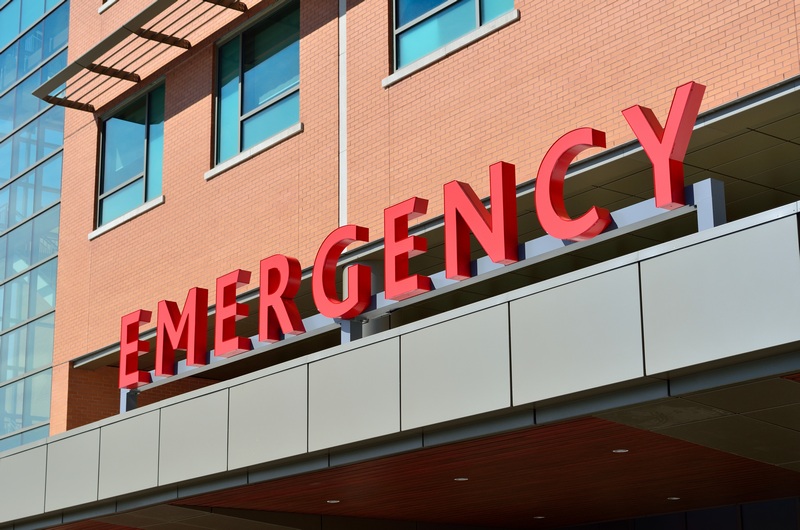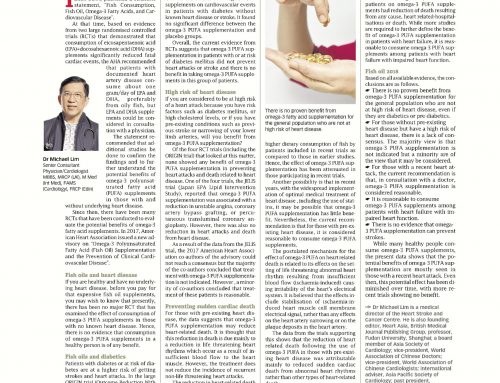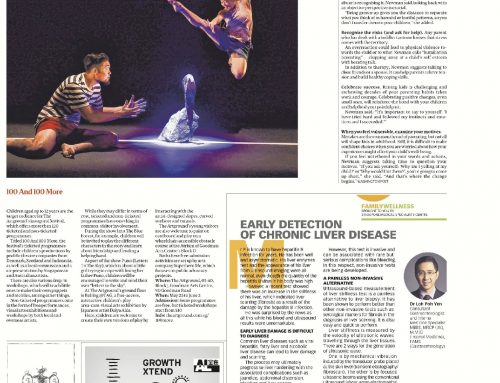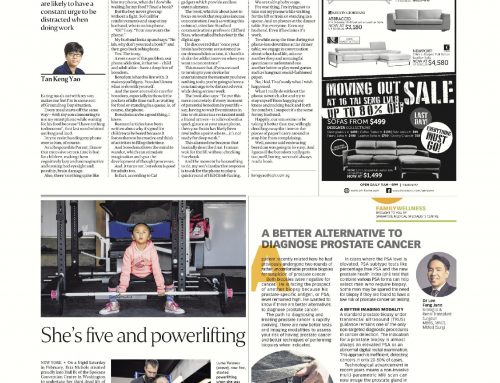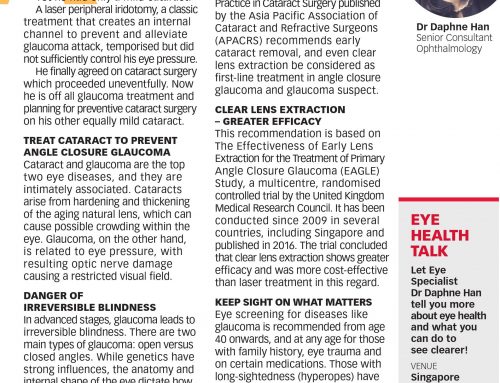It is inevitable in today’s high technology diagnostic testing that ionizing radiation (X-rays or gamma radiation) is often required to help the doctors make a diagnosis. Broadly, exposure to ionizing radiation can be divided into 2 broad categories of tests. The first category involves the use of X-rays in which a segment of the body is exposed to a dose of X-ray radiation at the point of diagnostic testing, and there is no residual radiation after the X-ray images have been taken. Their tests include routine X-rays, mammograms, computed tomography (CT) scans. The second category involves the injection of radioactive isotopes into the blood stream and detecting the distribution of the radioactive isotopes in the body using a detector. In this case, the radiation will remain in the body as long as the isotope remains in the body and the entire body will be exposed to radiation as the isotope circulates in the blood stream. Examples of the second category include sestamibi scan of the heart, thallium scan of the heart, and rubidium positron emission tomography (PET) scan of the heart. Sometimes, the patient is exposed to both types of radiation sources, for example, when undergoing a whole body PET-CT which is usually used for cancer studies.
Radiation dosage
The unit used to measure the biological effect of radiation on our body is the millisievert (mSv). According to the United States Nuclear Regulatory Commission, the average American receives 6.2 mSv of radiation annually. As an example, a common test that most post-menopausal women undergo for detection of breast cancer is the mammogram, X-ray of the breasts. The radiation dose for a mammogram (2 views) is 0.72 mSv. Compare this with the radiation dose from the newest generation of CT scanners, where the radiation dose of a 3-dimensional computed tomography scan of the heart arteries (coronary computed tomography angiogram or CCTA) can routinely be less than 1 mSv and in some patients less than 0.5 mSv. Do note that this radiation dose can be much higher with older CT scanners and less experienced centres where the test may occasionally have to be repeated because of non-optimal images.
Compare this with radiation from an invasive coronary angiogram, where a tube is inserted into the arterial circulation and X-ray images of the heart are taken upon injection of contrast. Data from the United Kingdom published in March 2007 in the Heart Journal showed that the radiation from invasive angiograms of the heart varied from 4.4 mSv (estimated additional risk of cancer of 1 in 9000) to 11.5 mSv (estimated additional risk of cancer of 1 in 3000). What it means is that for a patient with a history of heart artery bypass who chooses to undergo an invasive angiogram to check the heart arteries, the radiation dose is about 10 to 20 fold that of a person undergoing CCTA in an experienced centre using the latest CT scanners.
Heart tests and cancer
In a study published in the Canadian Medical Association Journal in 2011 that examined radiation from cardiac tests and treatment, it was estimated that for every 10 mSv of low-dose ionizing radiation, there was a 3% increase in the risk of age- and sex-adjusted cancer over a mean follow-up period of five years.
If the cardiac tests involve injection of radioactive isotopes (Thallium stress test, technetium sestamibi scans) into the body, the radiation dose can vary from 8 to 24 mSV. In the study “Myocardial perfusion scans: projected population cancer risks from current levels of use in the U.S” published in Circulation journal in December 2010, it was estimated that the risks for a scan performed at age 50 years for a dual-isotope (thallium-201+technetium-99m) scan were 25 cancers/10,000 scans.
Although the manufacturers of the Rubidium PET heart scan state that the radiation dose of this radioactive isotope scan is low, the reality is that the US Food and Drug Administration (FDA) had issued an advisory in 2011 about the high radiation doses (about 90 mSv) in 2 patients who had undergone this test as a result of impure isotopes. I have been reminded of this again as a recent friend of mine was recently diagnosed with leukemia and this person had undergone rubidium PET scan consecutively for a few years to assess his heart. Although it is impossible to prove that rubidium was the cause of his leukemia, it is always wise to avoid unnecessary ionizing or harmful radiation. The fact that radioactive isotopes can increase the risk of leukemia was documented in the study entitled “Increased Risk of Leukemia After Radioactive Iodine Therapy in Patients with Thyroid Cancer: A Nationwide, Population-Based Study in Korea” published in Thyroid Journal in August 2015.
Radiation emitting from the body after a scan
The reality is that no one knows for sure how much radiation one is exposed to when a radioactive isotope is injected into your blood stream as no one measures how much radiation your body is exposed to and how long the radioactive isotope stays in your body. When you walk out of the hospital, you really do not know whether there are still radioactive isotopes in your body and when is a safe time for you to hug and embrace your loved ones without fear of residual radiation emitting from your body. There are very few studies which have examined this issue and one small study published in July 2013 in the Journal of the American College of Cardiology entitled “Radiation Dose in Close Proximity to Patients After Myocardial Perfusion Imaging” by researchers from Beth Israel Deaconess Medical Center documented that radiation persisted hours after the test when the patients were examined before they left the hospital. However, there is no data as to when the radiation completely disappears from the body.
In 2011, there were 2 patients who were crossing the border to/from the United States when radiation detectors identified radiation originating from the patients. Both patients were found to be emitting a high radiation dose (about 90 mSv) and had undergone rubidium PET scan of the heart 2 and 4 months prior. The rubidium isotopes were contaminated with strontium isotopes. The frightening thing about the incident was that the impure radioactive isotopes will remain in the body for decades which means that the patients will be continuously exposed to radiation for the rest of their life and it also means that those who come into close contact with them will also be exposed to radiation.
Precautions for your loved ones
Precautions are prescribed for those who have been administered radioactive isotopes to treat medical conditions. For those who are given radioactive iodine for excessively high thyroid hormones due to a hyperactive thyroid gland or to kill any residual cancer cells after surgery for thyroid cancer, certain precautions are advised. These include sleeping alone for 3 to 5 nights after radioiodine administration (varies according to the quantity of radioactive iodine administered) and avoiding direct contact with children for up to 7 days. In addition for the first 3 days after treatment, keep a distance (about 2 metres) away from others, drink plenty of liquids to remove radioactive iodine through the urine, do not share personal items (including towels, eating utensils), wash hands frequently, clean toilet seat after usage, wash your cups and dishes separately and do your laundry separately.
Currently, there is insufficient data for doctors to understand how long the body will continue to emit radiation after a nuclear scan of the heart. Although doctors do not provide specific precautionary advice after diagnostic tests using radioactive isotopes, given that the body continues to emit radiation for some time after the radioactive scan, it may be advisable to take similar precautions for a day or two after the tests to avoid potential radiation exposure to your loved ones.
Hence unlike radioactive isotope scans, the radiation exposure from X-rays or CT scans are present only during the scan and there is no further X-ray radiation exposure upon completion of the X-rays. In addition, the radiation dose you are exposed to is calculated by the machine after each scan is completed.
Be radiation smart
Diagnostic tests are essential in today’s health care facilities and it is almost impossible not to be exposed to ionizing radiation. Small amounts of radiation are harmless and do not increase the risk of cancer. Hence, one needs to be radiation smart to maximize the accuracy of modern diagnostic tests and minimize the potential risks of ionizing radiation. Some useful measures include:- 1) if you are asked to undergo a test that involves the injection of a radioactive isotope, ask your physician whether there is an alternative with lower or no radiation dose; 2) If you are asked to undergo a nuclear scan of your heart to detect the presence of heart arteries which involves the injection of radioactive isotopes, you can ask for an alternative such as CCTA which is the only non-invasive test that allows the direct visualisation of heart arteries; 3) if your doctor asks you to undergo a nuclear scan of your heart to detect the viability of your heart muscles, you may want to consider asking for another alternative test which has no ionising radiation such as magnetic resonance imaging (MRI) of the heart; 4) if your doctor wants to send you for CCTA, choose a highly experienced centre with the ability to do the scans accurately at low radiation doses; 5) If you have chest pain and want to avoid any X-ray exposure, you may want to consider using MRI of the heart arteries to look for significant blockage in the major heart arteries – there is no injection required and there is no X-ray radiation. However, there are very few centres with the expertises to do this test and the accuracy is less than that of CCTA; 6) If your doctor wants to do an invasive coronary angiogram, you should discuss with him to consider the alternative of doing a CCTA instead. Arm yourself with facts about radiation – you may be surprised that most doctors have no knowledge of the radiation exposure from the various diagnostic tests and treatments. Beware of the invisible enemy!

